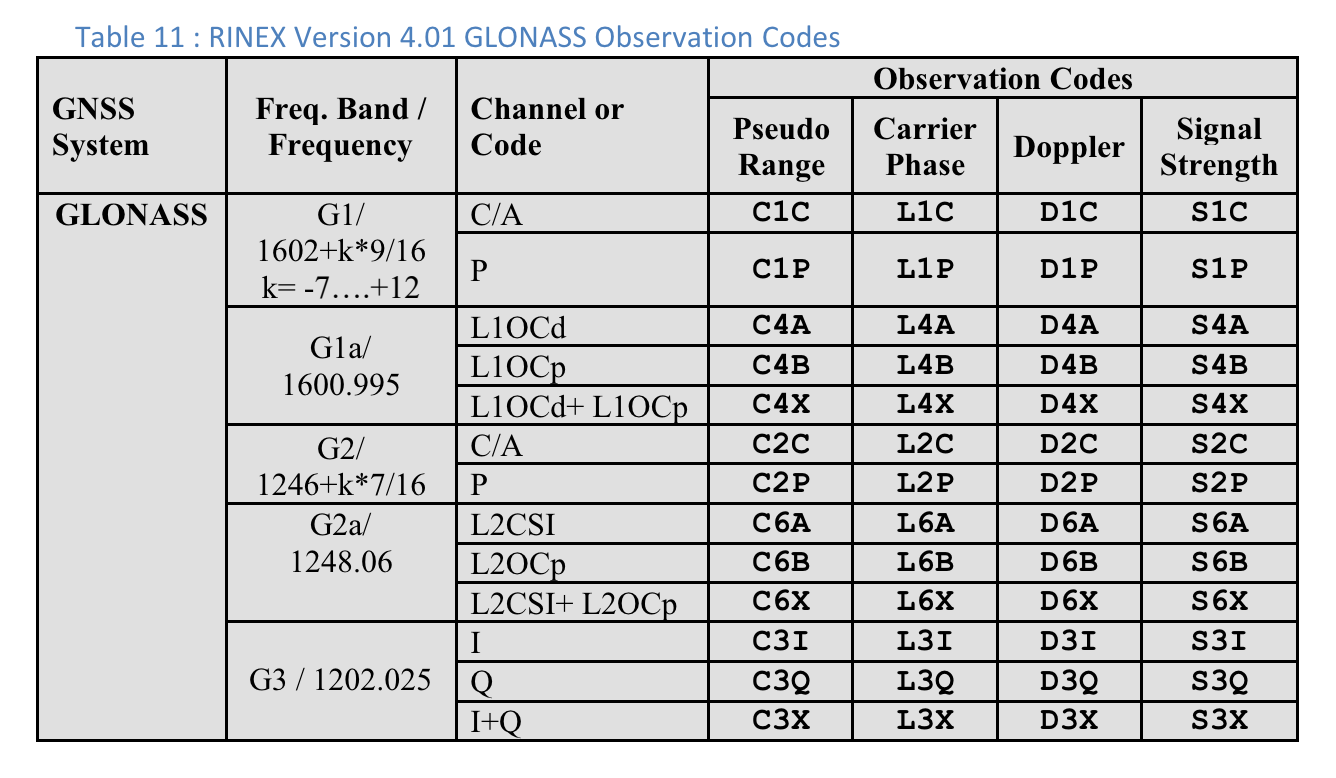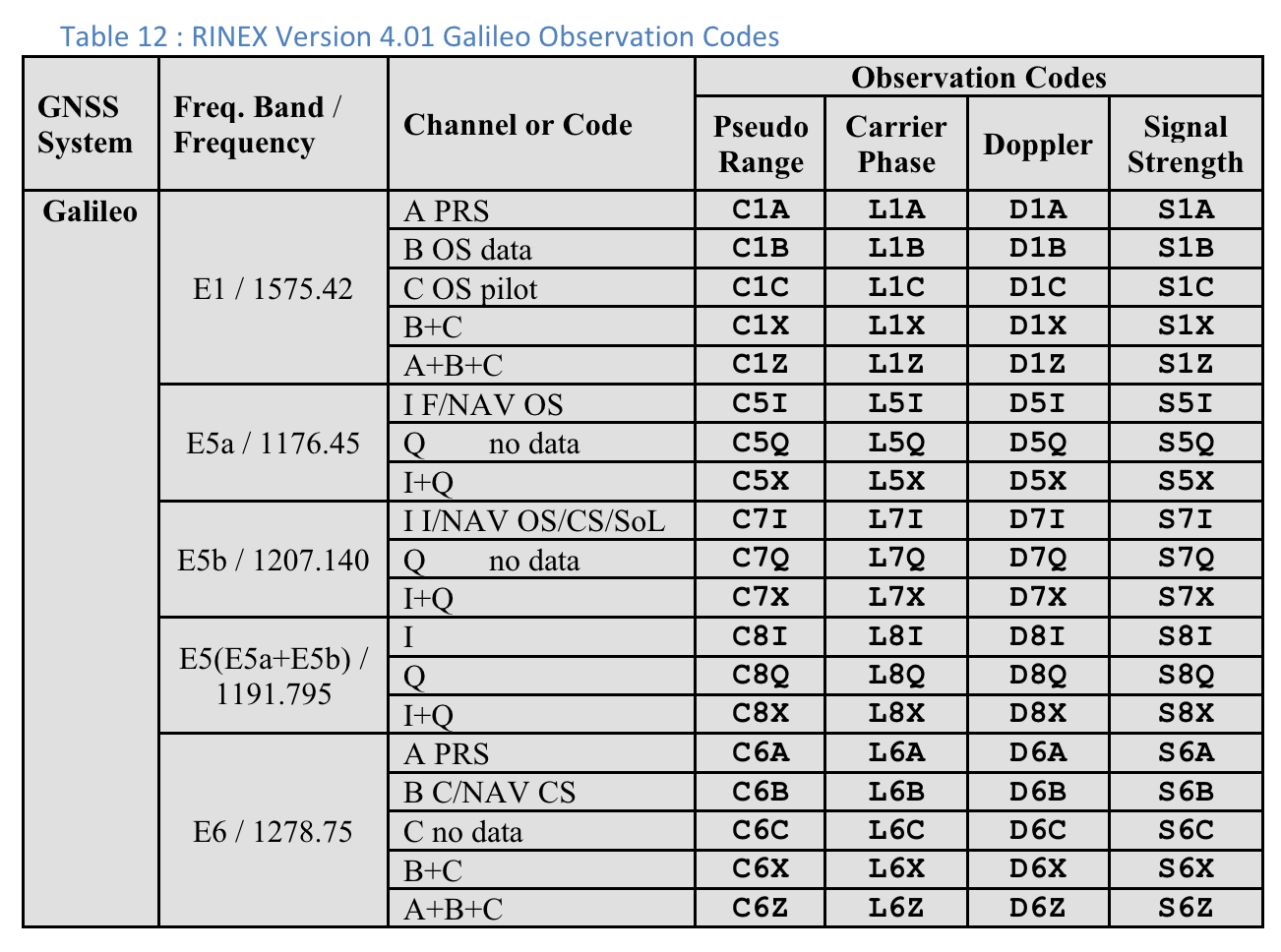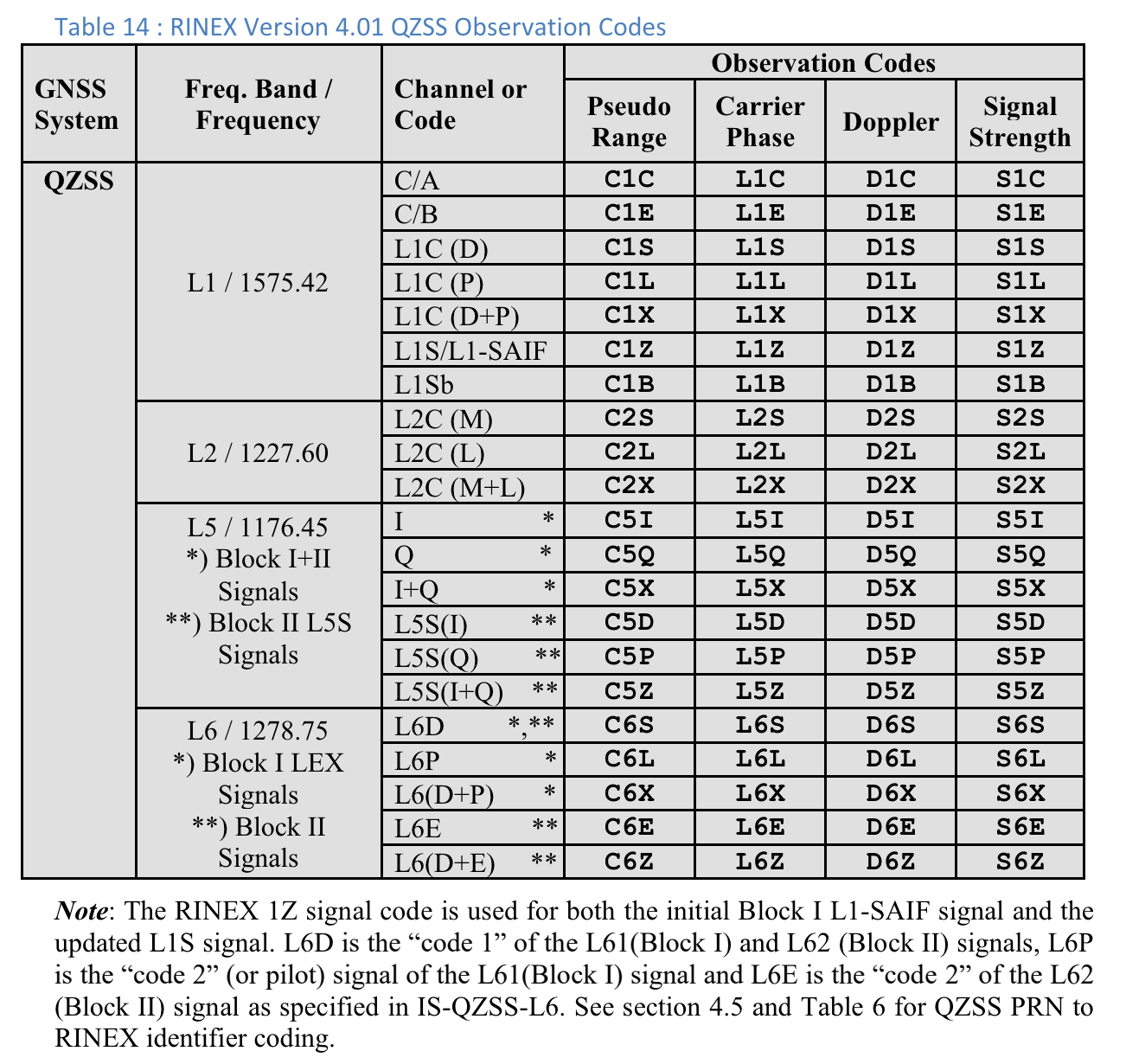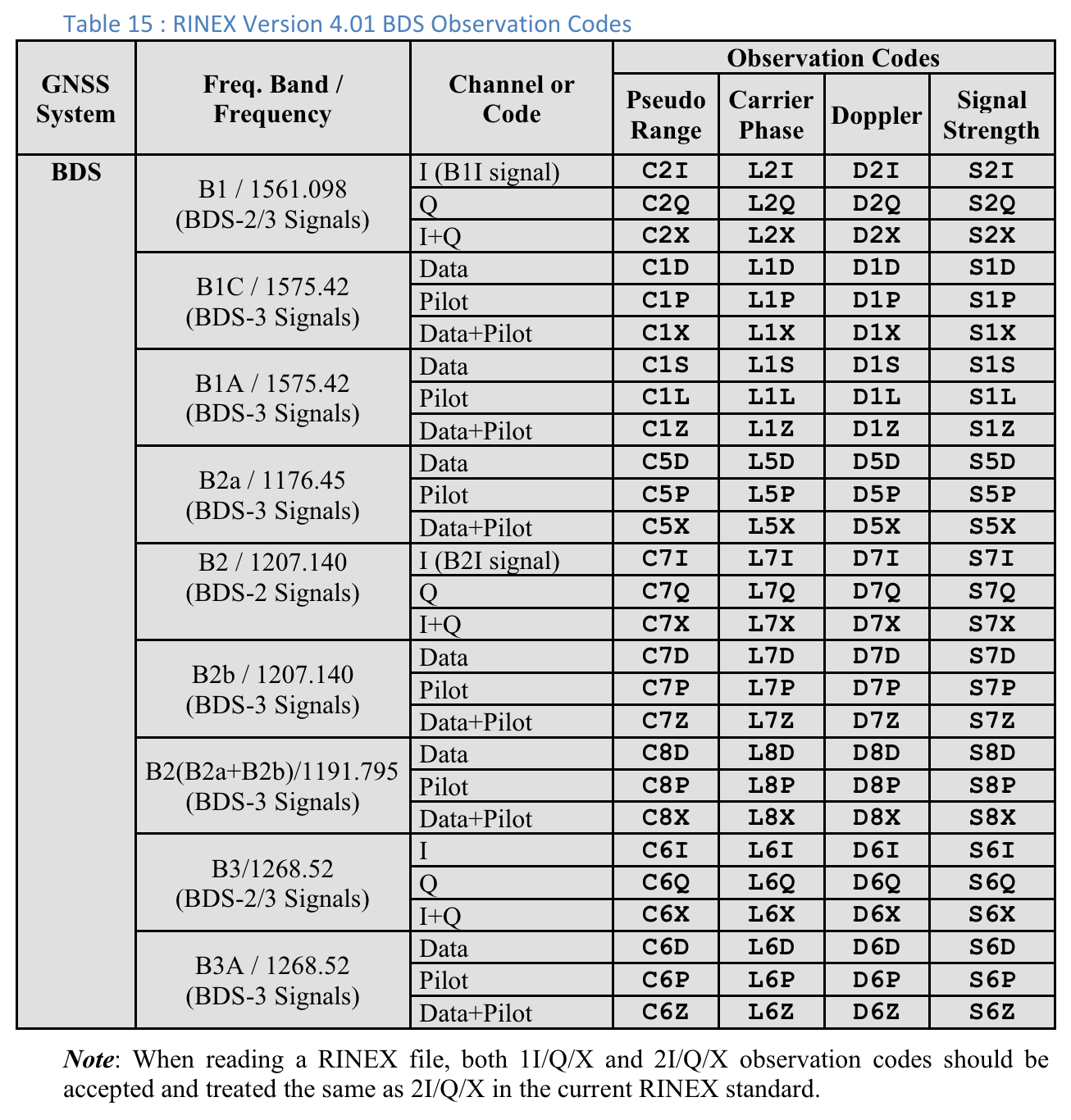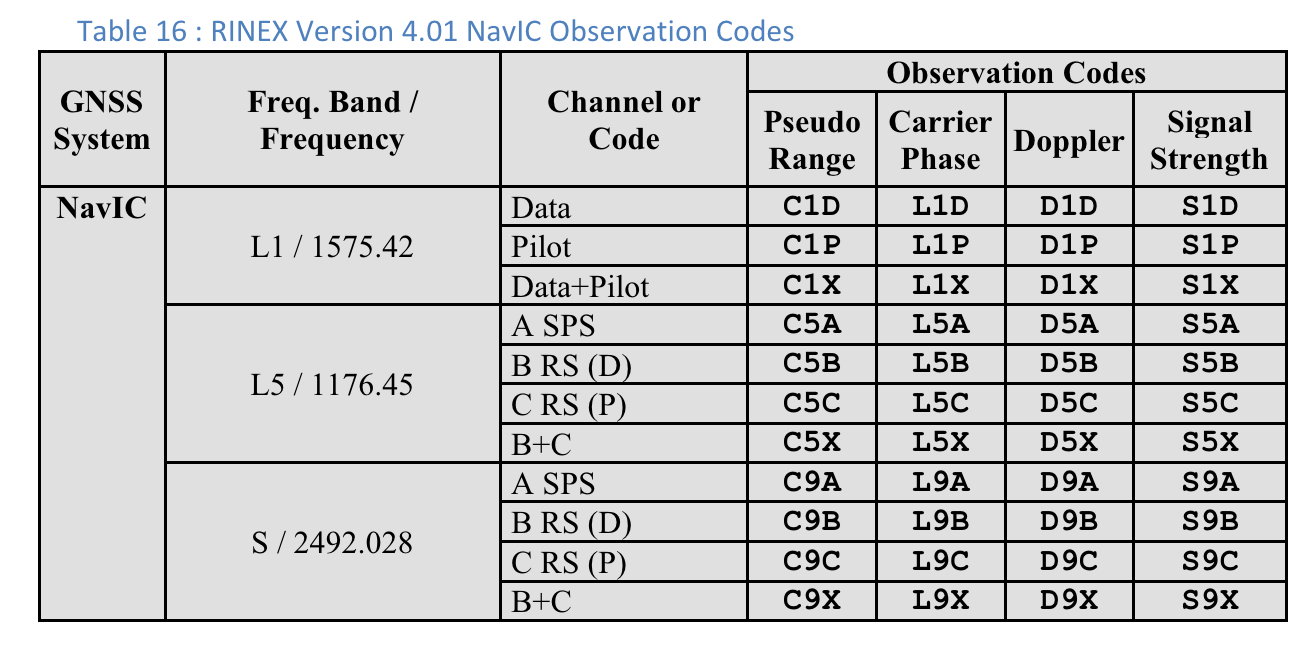Với GnssLogger v3.1, người dùng có thể xem và phân tích dữ liệu GNSS thô trên màn hình Measurements (Đo lường).
Dưới đây là màn hình Đo lường, sau đó là một số mẹo và thủ thuật để khai thác tối đa dữ liệu này:
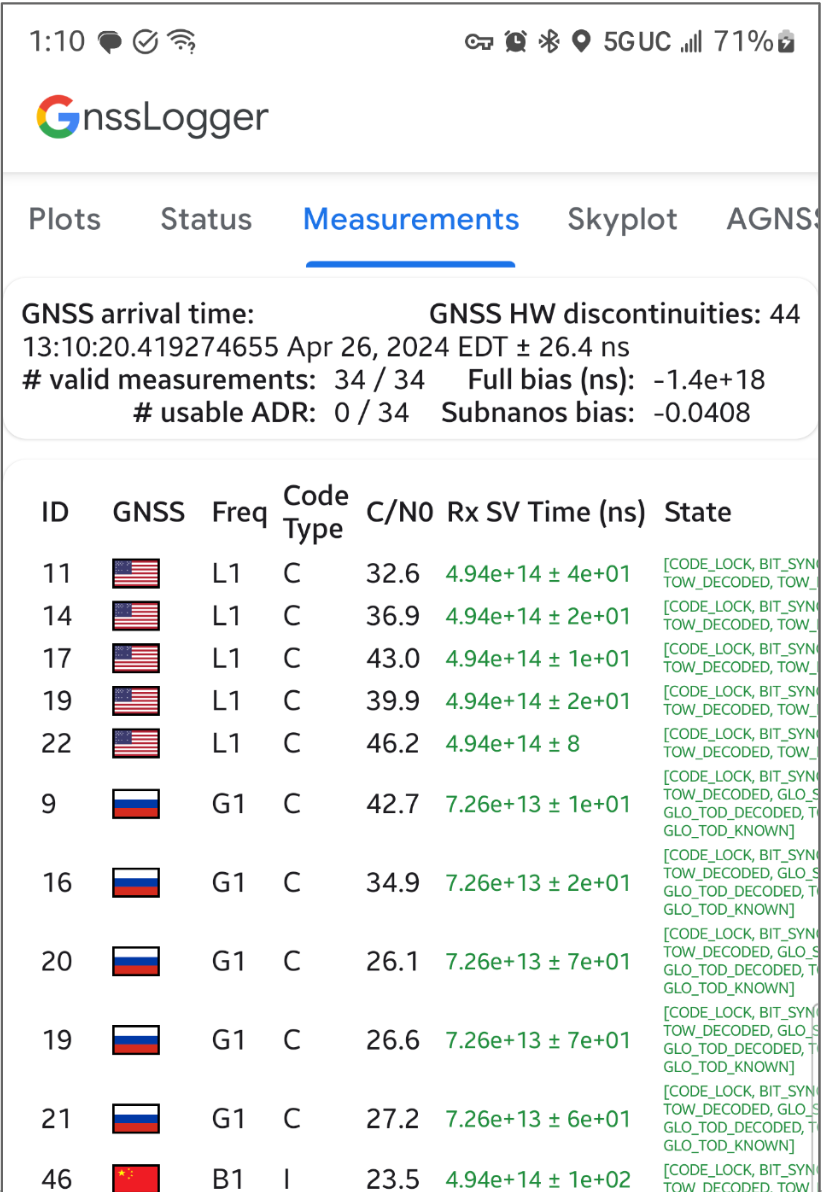
Trong thẻ trên cùng:
- Ở trên cùng bên trái cho thấy dữ liệu đồng hồ GNSS (tương ứng với
GnssClock). - Ở trên cùng bên phải cho thấy số lượng điểm gián đoạn phần cứng (HW) GNSS (từ
GnssClock.getHardwareClockDiscontinuityCount), giúp xác định xem chế độ chu kỳ làm việc có đang bật hay không. Khi bộ đếm này tăng lên, điều đó cho biết đã có sự gián đoạn trong quá trình quan sát liên tục các tín hiệu GNSS (ví dụ: chu kỳ làm việc đang bật). Ở phía dưới, thẻ này hiển thị thông tin tổng hợp cho tất cả các phép đo:- # valid measurements (Số phép đo hợp lệ) – Để một phép đo được coi là hợp lệ, bạn phải đặt cờ
STATE_CODE_LOCKvàSTATE_TOW_KNOWNhoặcSTATE_TOW_DECODEDtrongGnssMeasurement.getState. - # usable accumulated delta range (ADR) — Để ADR hoặc pha sóng được coi là có thể sử dụng để định vị, bạn phải đặt cờ
ADR_STATE_VALIDvà không được đặt cờADR_STATE_RESETcũng như cờADR_STATE_CYCLE_SLIPtrongGnssMeasurement.getAccumulatedDeltaRangeState.
- # valid measurements (Số phép đo hợp lệ) – Để một phép đo được coi là hợp lệ, bạn phải đặt cờ
Nếu thiết bị của bạn luôn báo cáo 0 ADR có thể sử dụng, ngay cả khi ở ngoài trời với chế độ chu kỳ làm việc bị tắt, thì đó là dấu hiệu cho thấy thiết bị của bạn không hỗ trợ các phép đo pha sóng mang có thể dùng cho GNSS có độ chính xác cao.
Trong thẻ dưới cùng, mỗi hàng đại diện cho một GnssMeasurement riêng lẻ.
- Cột Loại mã cho biết chính xác loại tín hiệu GNSS bằng cách sử dụng các loại mã được xác định trong RINEX 4.01. Ví dụ: tín hiệu GPS L1 có loại mã "C", đại diện cho L1 C/A, như được chỉ định bằng chữ cái cuối cùng trong mã gồm 3 ký tự trong bảng RINEX. Tương tự, GPS L5 Q sẽ có loại mã "Q". Hãy xem các bảng về các cụm sao GNSS khác ở cuối tài liệu này để tham khảo.
- Trong cột Thời gian nhận SV (ns), văn bản có màu xanh lục nếu kết quả đo lường là hợp lệ.
- Trong cột Trạng thái, trạng thái cũng có màu xanh lục nếu phép đo hợp lệ. Trạng thái hiển thị phiên bản đọc được bằng mắt thường của các cờ bit được đặt trong trường GnssMeasurement.getState().
Đưa ra ý kiến phản hồi về các tính năng mới thông qua công cụ theo dõi lỗi công khai của chúng tôi.
Bảng 10 : Mã quan sát GPS theo RINEX Phiên bản 4.01
Đối với mỗi lần đo, "Loại mã" hiển thị là chữ cái cuối cùng của giá trị "Dải giả" được xác định trong quy cách RINEX 4.01 cho hệ thống GNSS và tần số sóng mang có liên quan. Ví dụ: "C" được dùng cho GPS L1 [C/A] còn "Q" được dùng cho GPS L5 Q.
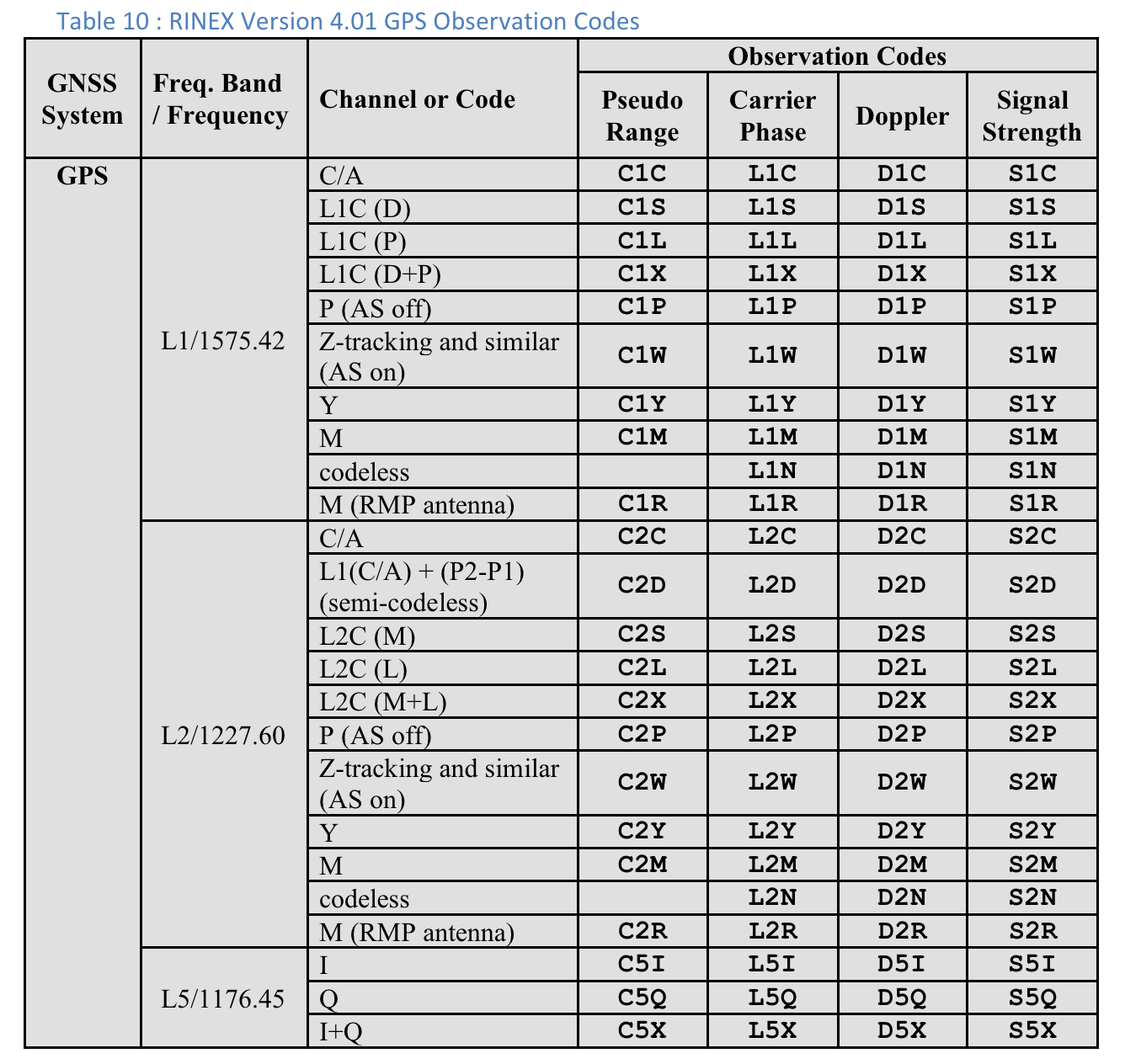
Người dùng có thể di chuyển sang phải để xem các cột bổ sung cho từng phép đo:
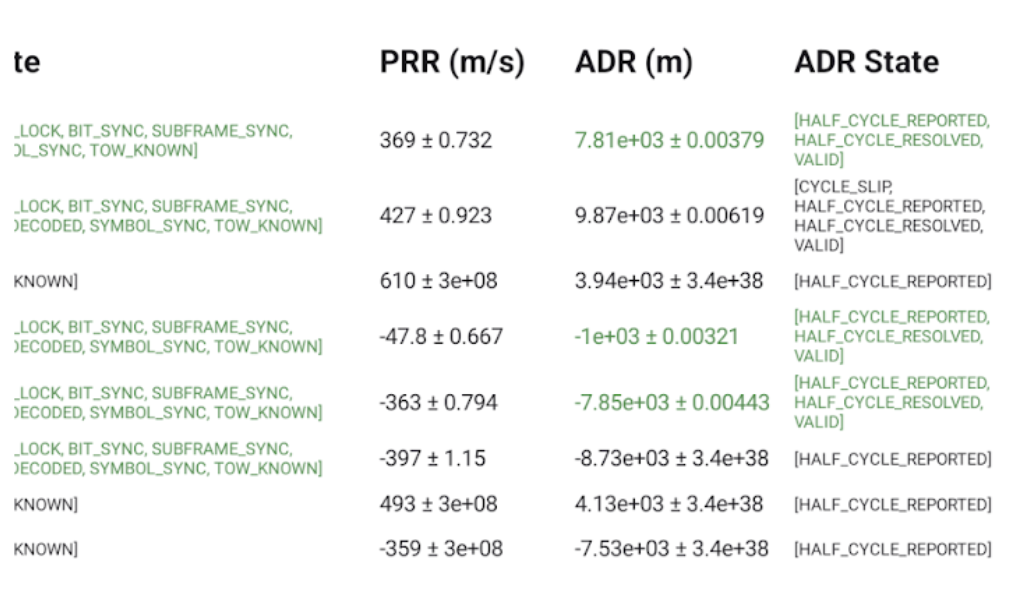
- PRR là Tốc độ phạm vi giả định tính theo mét/giây từ GnssMeasurement.getPseudorangeRateMetersPerSecond()
- Cột ADR State (Trạng thái ADR) hiển thị phiên bản có thể đọc được của cờ bit được đặt trong cột GnssMeasurement.getAccumulatedDeltaRangeState(). Nếu bạn có thể sử dụng ADR để định vị, thì văn bản trong các trường ADR (m) và Trạng thái ADR sẽ có màu xanh lục.
Mã quan sát RINEX 4.01
Ba chữ cái cuối cùng trong mã quan sát RINEX trong cột Phạm vi giả là giá trị Loại mã hiển thị trên màn hình Đo lường trong GnssLogger.
Dưới đây là các bảng trong thông số kỹ thuật RINEX 4.01 để thuận tiện cho bạn. Hãy xem thông số kỹ thuật đầy đủ để biết thông tin chi tiết.

